Hey there! Are you buzzing with excitement to learn about the importance of opening your roof to remove a beehive? Well, let me tell you, it’s not just about getting rid of those pesky bees. Removing a beehive is crucial for the safety of you and your loved ones. Bees can become aggressive if they feel threatened, and you definitely don’t want to deal with a swarm of angry bees. Plus, leaving a beehive in your roof can lead to damage and potential infestations in the future. So, don’t be afraid to take action and open up that roof to get rid of those buzzing bees! Not many people think of sweet, delicious honey as something that could cause a problem. However, it stops being so sweet once you find it staining your walls and flowing down your drain pipes, and it usually begins where you least expect it — your roofs and shingles. Know more about this invasion, what it means for your roof, and how APA bee removal can help.

Why Honey Bees Love Infesting Roofs
Honey bee scouts are tasked to find the colony a good place to build a new nest. They are drawn to deep and dark spaces that are safe from predators and intruders. Bees prefer spots with openings that can be easily defended and has as much as nine gallons of space. Unfortunately, all of these requirements are present in the roof of a house thanks to its ease of access, depth, and darkness.

Honey Bees and Roof Damage
When honey bees make their nest inside your roof, they leave a wake of destruction behind. Hives are heavy and can result in structural damage. Honey and honeycomb can also ruin and stain the felt paper, tar, and shingles most roofs are made of. It’s important to understand that honey bees don’t just dig a hole through your walls to make their nest – they remove and chew up anything on their path. During thge bee removal process it’s common to peel back a roof section only to discover destroyed insulation replaced by honeycombs.

How to Tell If Your Roof is Infested with Honey Bees
It’s quite easy to spot the signs of bee infestation in your home: • Buzzing inside your walls and roofs • Increased bee activity in and around your property • Dark spots of honey down the pipes or through walls At the first sign of suspicious honey bee activity, call APA Bee removal ASAP. It’s easier to control the damage when it’s caught early on; once the infestation reaches the point when your walls have absorbed honey, you’re likely to face expensive repairs and in the worst case scenario, roof or wall replacement.
How to Prevent a Bee Problem
Honey bees don’t burrow, so they specialize in finding existing holes in a roof as an access point. Take note that bees only need a tiny hole less than an inch wide to enter your roof. These small holes can often be found in spaces between bricks and in roof overhangs. Don’t give honey bees a chance to infiltrate your roof. Call in a roofing contractor for annual inspections to spot entry points, cracks, and check for common problems that can leave your roof vulnerable to infestations.
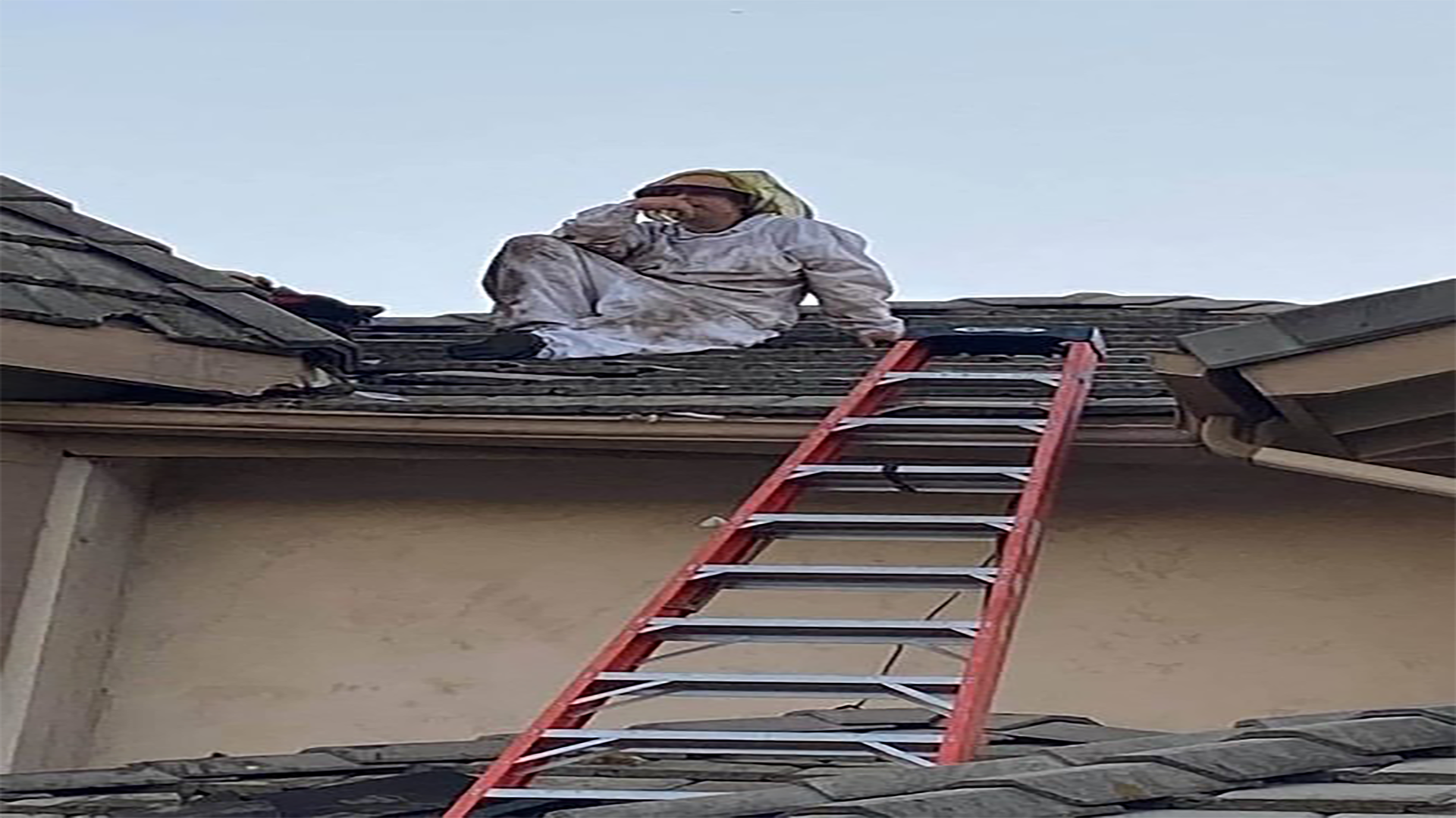
Always Leave Bee Removal to Professionals
Honey bee removal is not a DIY project. Bees can attack at the slightest signs of provocation, such as when you spray them with water or try to remove the hive. If you fail to remove every single bee and leave some dead ones onsite, they can rot and invite more pests to enter your home. In addition, bee removal doesn’t just involve eliminating the bees. It also includes taking care of the honey and other debris they leave behind. It’s a complicated process that requires specialized equipment, experience, and skills. Let The Bee Man take care of your bee problem effectively and efficiently. Call us at (626) 498-0231 for expert bee and beehive removal today.
If you are here reading, you may have just found out that there are bees inside the structure of your home. Even worse, the bees have already built a hive inside the wall or roof. No one likes to find out that bees have built a hive inside the structure of their home. It is often an expensive problem to fix. Why is this? Mainly because if the bees have been inside long enough to build a hive, the only way to remove the hive is by opening the roof, wall, or floor to extract it. What this means is that a power tool (saw, chipper, etc.) needs to be powered up to open the structure. This is often the only way to gain access to the hive. The thought of having to open a roof is upsetting to some homeowners, especially if it is a new or specialty type roof. So, what is the best way to remove a hive from a structure? The answer depends on where the hive is located. Let’s break it down by location.
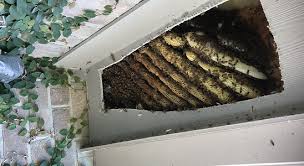
Bee Hive In The Wall
Hives can be in all types of walls. Brick walls, wood walls, and even stucco walls. Whenever the hive is inside a wall, the best way to remove it (in most cases) is by opening up the wall on the exterior. Here are the reasons why: Going inside through the drywall poses risks to the inside of the home. Beehive removal is messy. You have technicians in their bee suits who may track dirt in and out of the home by accident. Then you have the risk of bees getting inside the home. Even if you have an elimination performed prior to the hive removal, there are usually some BEES that are sniffing around while the hive is being removed. The last thing we want is to bring the bees inside the home. Also, in order to control the dirt, honey, and bees on the inside, a very thorough setup of plastic liners is required to keep everything protected. On top of all that you still have a repair to the drywall which often requires paint matching and sometimes texturing.
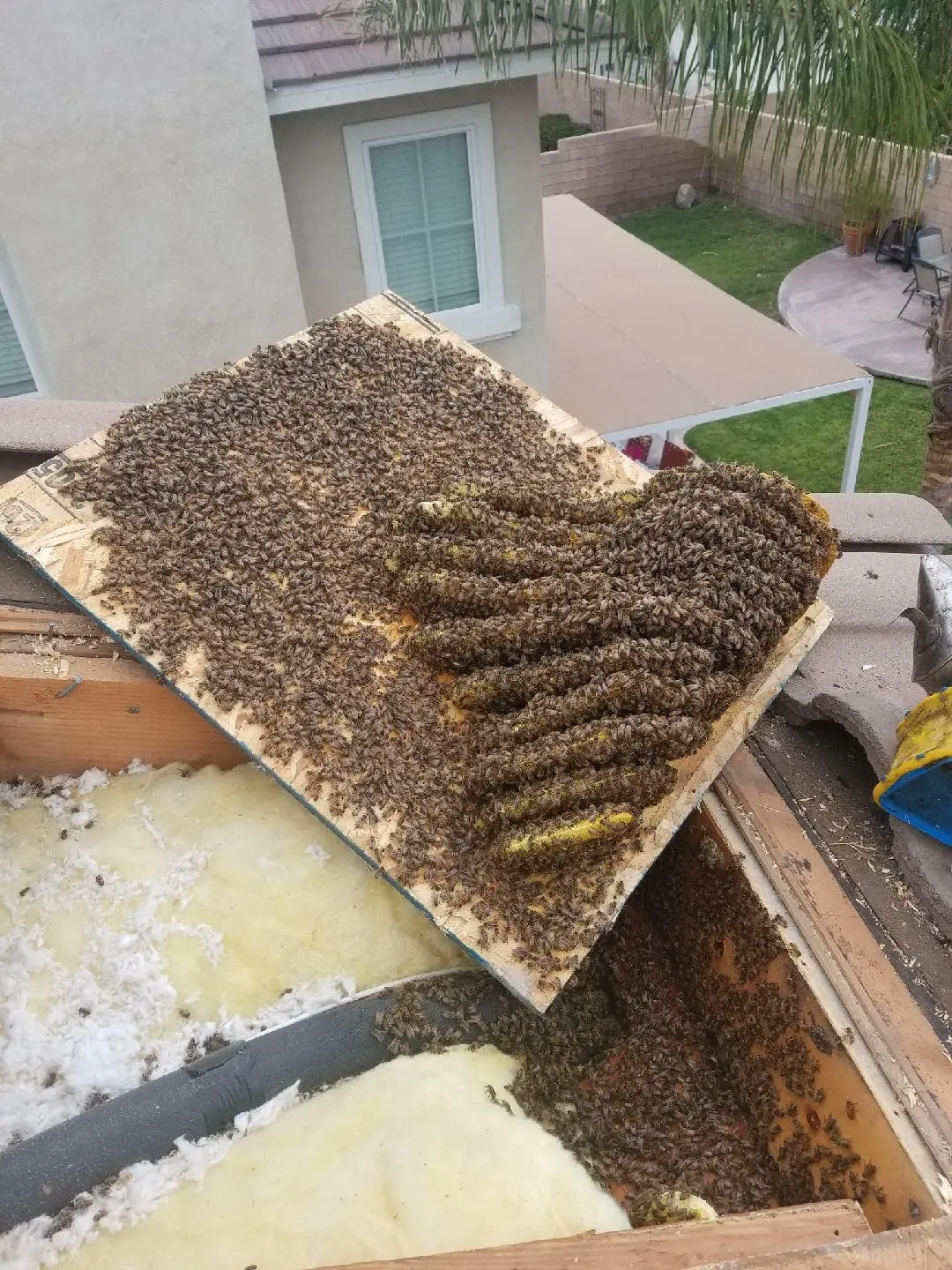
Bee Hive In The Roof
If the hive is inside the roof, it is often located in an attic, hanging down inside a crawl space. The best way to remove hives from a roof is by opening the roof on the exterior. It is quite common that many homeowners do not want their roof opened. They often ask us to remove the hive by crawling inside the attic. Although it is understandable that a homeowner would prefer it this way, it really isn’t the best way to perform the removal. Here are the reasons why: Going in through the attic crawl space is dangerous. Often it is unstable footing. There is risk that the technician may fall accidentally and have their foot go through the ceiling! Also, there is risk to damage to any electrical wires & water pipes. Another danger of removing a hive from an attic is the heat. Attics are extremely hot. Combine that with the fact that the technician will be wearing a bee suit, and you run a risk of heat stroke. Also, may times the angle of the rooftop makes it impossible to gain access to the hive. There are simply some hives that cannot be reached if they are located in a crowded corner of the attic. You would need an incredibly talented and flexible technician (who is able to pull off some very advanced yoga moves in a bulky bee suit) in order to get the job done this way. Not many people think of sweet, delicious honey as something that could cause a problem. However, it stops being so sweet once you find it staining your walls and flowing down your drain pipes, and it usually begins where you least expect it — your roofs and shingles. Know more about this invasion, what it means for your roof, and how bee and wasp exterminators can help.
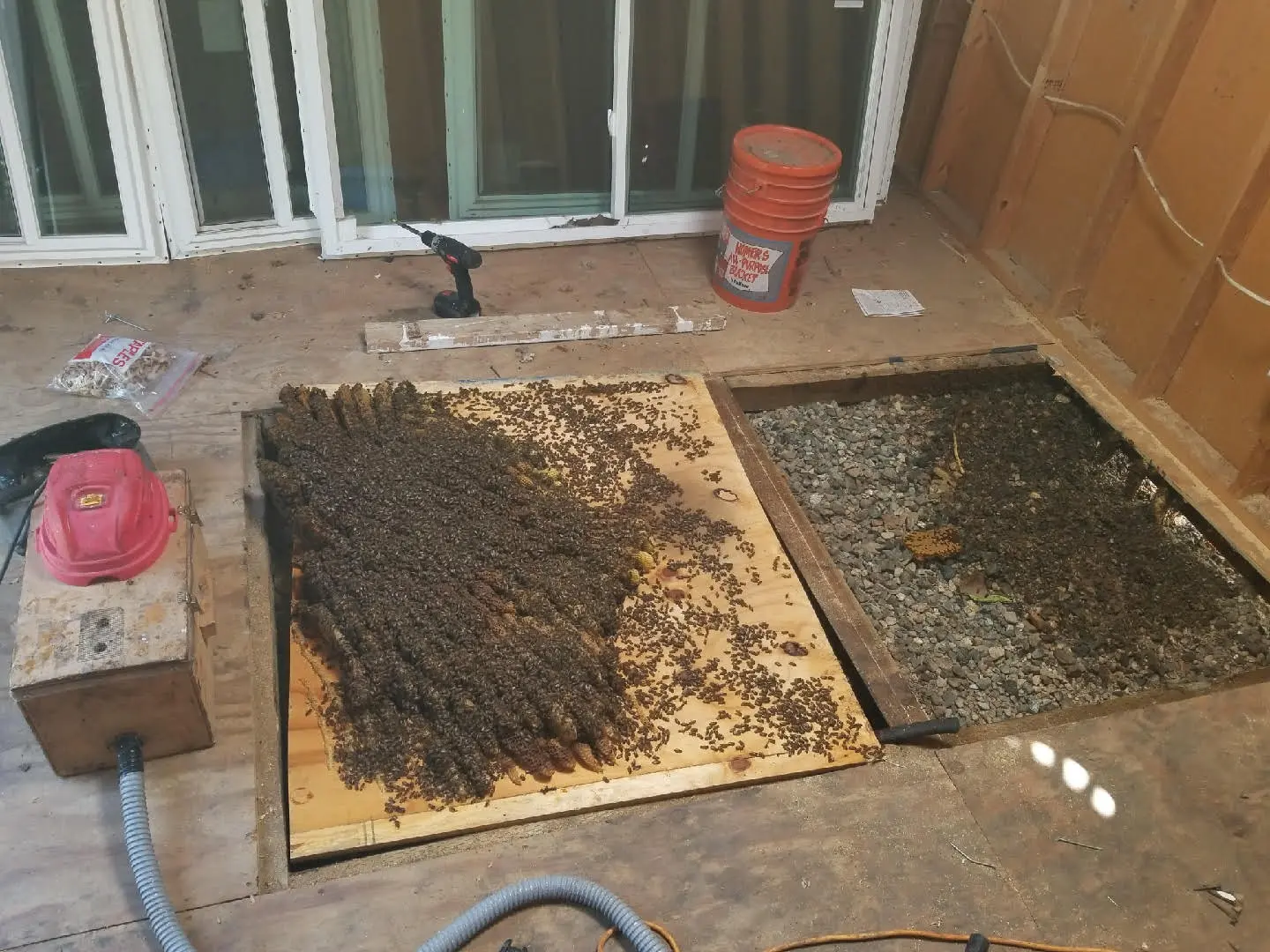
Beehives Under The Floor
Whenever a hive is located under a floor or porch, it is usually located in a crawlspace under the house or deck. Often, a homeowner will request that we go under the crawl space to remove the hive. Unless you can completely stand up under the crawl space, it is usually not the best way to remove the hive. So, what is the best way? The best way to remove hives from a floor is from above the hive. The main reason is that underneath, there is usually very limited movement. Having a technician crawl on hands and knees in a bulky bee suit usually isn’t feasible. In addition to that, there are challenges working below the hive while trying to remove it. The main challenge is that honey can drip down on top of the technician. With limited space to angle arms, it is very hard to scrape and gain control of the combs of the hive. It’s all about the positioning. When removing a hive, you really want to be above it, in order to remove it properly. The better control you have over scraping off the hive, the less risk of damage from honey running and dripping inside the structure.
From the top, it is much easier to get a good grip on the combs and prevent honey dripping. As you can see by now, the best way to remove a hive from a structure is usually from the exterior. There are, however, some exceptions. Sometimes it is not feasible to open on the exterior. Sometimes the costs of doing it on the outside are way more expensive than the cost of the extra precautionary work needed to do it from the inside. For example, replacement parts for rock and/or block wall exteriors may be near impossible to order or replace. Slate roofs are prone to breaking easily and extremely difficult to work on. Older homes with custom tiles that are no longer manufactured can also be tricky when considering the cost of repair. Aside from these exceptions, removing from the exterior is almost always the best way to remove beehives from a structure. Have bees built a hive inside the wall or roof of your home? Believe it or not, it’s quite common for bees to build a hive inside the structure of your home. We at APA Bee Removal are experts at removing hives from structures. In fact, it is one of the most common services we provide. Sometimes we can even remove the bees alive if the conditions are right. The first step in removing a hive from a structure is to identify where the bees are located and figure out how long they have been there for. The next step is figuring out how to open the structure in order to remove the bees and hive safely. The last step is to ensure the bees don’t return. APA Bee Removal has performed thousands of hive removals from structures for over 20 years. We are fully licensed, bonded, and insured for your protection. If you would like to schedule an appointment to receive an estimate for a hive removal, give us a call.
We Repair YourRroof, Wall or Ceiling From Bee Swarm Damage
APA Bee Removal understands the destruction a bee colony can cause. After safely removing the honey bees from your home, our bee removal experts can handle any repairs that may be needed. Don’t let a honey bee infestation affect your home any longer. APA Bee Removal will assess the damage the honey bee colony has made to your home and provide you with an estimate for the needed repairs. APA Bee Removal bee removal repair experts will make you feel as if the honey bees were never there,repairing any damage and also offer a guarantee on our repairs against future leaks.
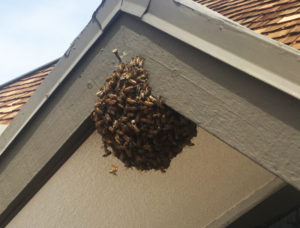
Bee Swarm – No Honeycomb
So how do you know when it is (or isn’t) necessary to open the wall or roof in order to get the beehive out? The main factor that determines this is the length of time the bees have infested the wall or roof void. Here is what you need to know: If the bees have been there less than a week or two, we almost always advise the homeowner NOT to open up the structure. This is because if the bees have only been there a short amount of time, they haven’t had a chance to build a fully established hive yet. In this scenario it is way less expensive to perform an elimination. It kills the bees before they have a chance to build a hive. Because you don’t need to open the structure in order to perform an elimination, its will save you a heck of a lot of money. *Note: Normally we prefer to remove the bees alive and relocate them humanely. In situations where bees get inside a wall or roof void however, smoking or trying to lure the bees out rarely works. Smoking bees in a structure usually makes it worse because it pushes the bees further into the structure, instead of driving them out. Trying to use a lure to coax out bees rarely solves the problem and often makes it worse.
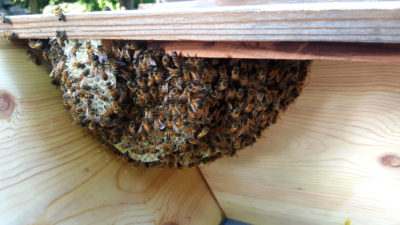
Bee Swarm After 2-3 Weeks
White Honeycomb If the hive has been there 2-3 weeks, you are in a grey area. Sometimes there is enough hive material that would make it necessary to open the structure. Sometimes it isn’t necessary. There are times when one of our technicians will look at a structural job, and based on what he observes, it may be undetermined whether or not it is necessary to open the wall or roof. Whenever one of our technicians isn’t absolutely sure if there is a hive, he will usually advise the homeowner not to pay the additional money to open the structure. In these cases, he will tell the customer that it is better to start with the elimination only and see if that works. If the bees return quickly (or year after year) in the same location, then it will be advisable to open the structure.

Bee Swarm After A Month or longer
Yellow, Brown and Black Comb If the bees have been there for more than four weeks, there will usually be In this situation the technician will likely advise the homeowner to have the hive removed. There are a number of reasons why The main reason being that eventually a new swarm is likely re infest the same area, year after year. It’s important to note that a reputable bee removal company will never advise you to open the structure if there isn’t a hive. Unfortunately there are some less than honest companies that will advise the home owner to open the structure when it isn’t needed. Why do they do this? Usually because they can charge more for the job, or they are unlicensed with the structural pest control board. The best way you can protect yourself from being scammed into necessarily opening a structure is by asking for the company to take photos. Have them take a photo of the hive before it is removed, and another photo after it is removed. Not only does this protect you from having to open the structure unnecessarily, it also provides proof of a thorough clean out of the hive.

